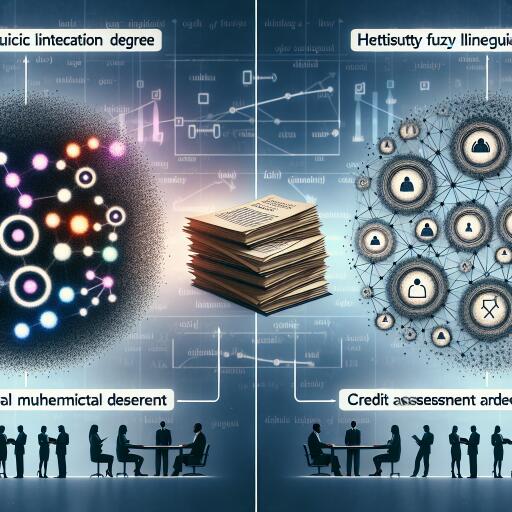Enhancing Credit Assessment with Advanced Fuzzy Measure Identification Method
In the realm of credit assessment, the accurate evaluation of the interactivity between attributes is paramount. Traditional methods often stumble upon the complexity of capturing the subtle nuances of attribute interaction, particularly when decision-makers face uncertainty and hesitation. Addressing this challenge, a groundbreaking approach employing the hesitant fuzzy linguistic term set (HFLTS) has emerged, revolutionizing the identification process of 2-order additive fuzzy measure. This method adeptly handles the fuzziness and hesitation in evaluations, offering a more nuanced and accurate tool for credit assessment applications.
The Core of the Innovation
The innovative method introduced is based on supermodular game theory, establishing a linguistic term set to articulate the interactivity between attributes. This approach allows experts to use linguistic expressions for capturing the complexity of interactions in a qualitative manner. These expressions are then transformed into HFLTSs, providing a more flexible and comprehensive reflection of decision-makers’ real preferences.
Using the hesitant fuzzy linguistic weighted power average operator (HFLWPA), the evaluations from multiple experts are aggregated, ensuring a broad and inclusive analysis. A crucial step in this method is defining the hesitant fuzzy linguistic interaction degree (HFLID) through a piecewise function, leveraging the standard Euclidean distance formula. This calculation is pivotal for identifying the 2-order additive fuzzy measure, setting the stage for a multi-attribute decision-making (MADM) process enhanced by the Choquet fuzzy integral as a nonlinear integration operator.
Practical Application in Credit Assessment
To demonstrate the efficacy of this method, it was applied to the credit assessment of big data companies in China. The results validated its feasibility and effectiveness, showcasing its potential to significantly improve the precision of credit evaluations. This method not only enriches the theoretical framework of 2-order additive fuzzy measures but also broadens their applicability in various MADM scenarios.
Overcoming Traditional Limitations
Traditionally, the assessment of attribute interaction suffered from an inability to effectively manage the complexity and uncertainty inherent in the decision-making process. The classical weighted arithmetic mean method, for example, falls short when faced with the intricacy of attribute interactivity. The introduction of fuzzy measure and fuzzy integral concepts by Sugeno highlighted a path forward, which was further refined by Grabisch’s concept of k-order additive fuzzy measures. However, these methods still struggled with capturing the fuzziness and hesitation in decision-making, a gap now bridged by the use of HFLTS.
Towards a More Quantitative Understanding
The proposed 2-order additive fuzzy measure identification method provides a structured approach to understanding the interactivity between attributes. Recognizing the importance of both fuzziness and hesitation in decision-making, this method employs HFLTS to offer a nuanced tool for credit assessment among other applications. It showcases how advanced mathematical tools and concepts can be leveraged to tackle the complexities of financial evaluation and decision-making.
Conclusion
The introduction of a 2-order additive fuzzy measure identification method based on HFLID and its application in credit assessment signifies a significant leap forward in MADM methodology. By accurately capturing the fuzziness and hesitation in attribute evaluation, this method offers a sophisticated tool for financial analysts and decision-makers. As this method continues to be refined and applied, we can expect broader adaptations and implications across various sectors, further enriching the landscape of quantitative decision-making.
This novel approach not only facilitates a deeper understanding of attribute interactivity but also enhances the accuracy and reliability of credit assessments—a testament to the evolving landscape of financial analytics in the era of big data and complex decision environments.










